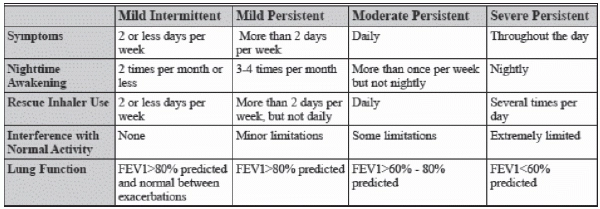For Asthma, Shift Your Focus From Etiology To Severity
Key point: Identify the severity to correctly code for asthma in ICD-10
Spring can be really difficult for people with asthma, especially if they have a pollen allergy. Added to this, summer heat waves are notorious for sending asthmatics to urban areas, and to the emergency room.
ICD- 9 Focuses on Etiology
For the ICD-9 system of coding, you need to focus on etiology of the condition. You need to start with 493 (Asthma) when you arrive at a diagnosis of acute exacerbation. The code will expand into the following four codes, based on the causative factor:
The codes 493.0, 493.1 and 493.9 expand further using a fifth digit number based on whether the condition is categorized as unspecified, status asthmaticus, or acute exacerbation.
For example, 493.0 expands into the following three codes:
493.8 expands into these two codes:
ICD-10 Shifts to Condition Severity
The 493 codes under ICD-9 codes will crosswalk to J45 (Asthma) when ICD-10 becomes effective. At that point you’ll need to follow the severity of the symptoms and the necessity for treatment with a nebulizer to determine the correct diagnosis code. This is consistent with the current national asthma treatment guidelines determined by The National Heart, Lung and Blood Institute.
Based on severity, you have the following four states of the condition (see chart for details):
When using ICD-10 codes, you will have to carefully read physician’s note to assess the severity of the condition as this is necessary for accurate reporting. J45 expands, based on severity, into the following five code sets as described in the guidelines:
All these above mentioned codes further expand based on the asthma state into uncomplicated, acute exacerbation and status asthmaticus.
For example, J45.2 expands into the following three subsets:
Example: A patient’s note says that he suffers from episodes of acute asthma exacerbation. His detailed history showed that the patient has been suffering from symptoms for more than two times a week. He used inhaler more than twice a week. The acute exacerbation has been limiting his daily activities to a great extent. The doctor asked for pulmonary function tests and recorded a forced expiratory volume in 1 second (FEV1) >80%. Based on the symptoms and results of tests, the doctor diagnosed that the patient is suffering from acute exacerbation of a mild persistent type of asthma. With ICD-10, you’ll report the diagnosis using J45.31 (Mild persistent asthma with [acute] exacerbation).
Source: National Heart, Lung, and Blood Institute. Expert Panel Report 3 (EPR3): Guidelines for the Diagnosis and Management of Asthma. URL:www.nhlbi.nih.gov/guidelines/asthma/asthgdln.htm.


